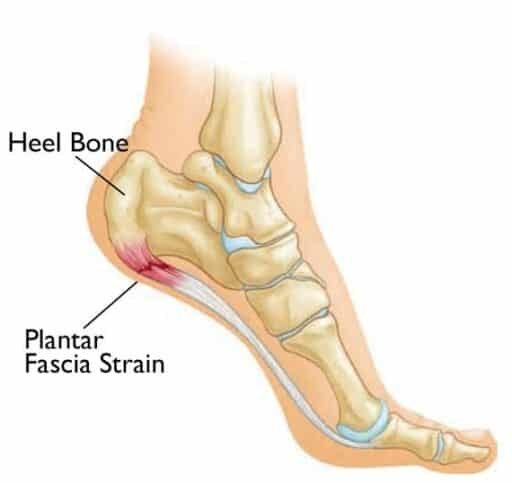
Pelvic Floor Muscles: Understanding, Common Problems, and Strengthening Exercises
Understanding Pelvic Floor Muscles The pelvic floor is a group of muscles and ligaments that support the organs in your…
05/09/2024

Understanding Pelvic Floor Muscles
The pelvic floor is a group of muscles and ligaments that support the organs in your pelvis, including the bladder, bowel, and, in women, the uterus. These muscles stretch from the pubic bone at the front to the base of the spine at the back. A well-functioning pelvic floor helps control bladder and bowel function, supports the spine, and plays a role in sexual health.
Key Functions of the Pelvic Floor Muscles:
– Support: The pelvic floor muscles support the organs within the pelvis, preventing prolapse.
– Control: They help in maintaining urinary and fecal continence.
– Stability: Contribute to the stability of the core and lower back.
– Sexual Function: Play a significant role in sexual function and sensation.
Common Problems with Pelvic Floor Muscles
Several issues can arise if the pelvic floor muscles are weakened, tight, or otherwise dysfunctional:
1. Pelvic Floor Weakness:
– Common in postpartum women, post-menopausal women, or those who have undergone surgery (e.g., prostatectomy in men).
– Symptoms include urinary incontinence, fecal incontinence, and pelvic organ prolapse.
2. Overactive Pelvic Floor (Tight Pelvic Floor Muscles):
– Can occur due to stress, poor posture, repetitive strain, or trauma.
– Symptoms may include pelvic pain, pain during intercourse, or difficulty with urination and bowel movements.
3. Pelvic Organ Prolapse:
– Occurs when pelvic organs like the bladder, uterus, or rectum drop from their normal position and push against the vaginal walls.
– Symptoms include a feeling of heaviness or dragging in the pelvis, bulging in the vagina, and difficulty emptying the bladder or bowels.
4. Pelvic Pain and Dyspareunia (Painful Intercourse):
– Often due to tight or overactive pelvic floor muscles, scar tissue, or underlying conditions like endometriosis.
5. Urinary and Fecal Incontinence:
– Leakage of urine or stool due to weakened pelvic floor muscles. This can happen during activities like coughing, sneezing, or exercising.
Exercises to Strengthen and Protect Pelvic Floor Muscles
Strengthening the pelvic floor muscles can help prevent or manage many of these problems. Here are some effective exercises:
1. Kegel Exercises:
– Description: Involves contracting and relaxing the pelvic floor muscles.
– How to Perform: Sit or lie down comfortably. Squeeze the muscles you would use to stop urination, hold for 5 seconds, then relax for 5 seconds. Repeat 10-15 times, 2-3 times a day.
– Progression: Gradually increase the hold time to 10 seconds and the number of repetitions.
2. Bridge Pose (Glute Bridge):
– Description: Strengthens the glutes, core, and pelvic floor muscles.
– How to Perform: Lie on your back with knees bent and feet flat on the floor, hip-width apart. Lift your hips toward the ceiling, squeezing your glutes and pelvic floor muscles. Hold for 3-5 seconds, then lower. Repeat 10-15 times.
– Progression: Hold the bridge position longer or add a resistance band around the thighs for more challenge.
3. Squats:
– Description: Engages the pelvic floor muscles along with the glutes, quads, and core.
– How to Perform: Stand with feet hip-width apart. Lower your body as if sitting in a chair, keeping the chest up and knees behind toes. Squeeze the pelvic floor muscles as you return to a standing position. Repeat 10-15 times.
– Progression: Add weights or increase repetitions for more intensity.
4. Bird-Dog (Superman):
– Description: Strengthens the core, back, and pelvic floor.
– How to Perform: Start on your hands and knees. Extend your right arm forward and left leg back while squeezing the pelvic floor. Hold for 3-5 seconds and switch sides. Repeat 10 times on each side.
– Progression: Increase the hold time or add ankle and wrist weights.
5. Heel Slides:
– Description: A gentle exercise to activate and strengthen the pelvic floor muscles.
– How to Perform: Lie on your back with knees bent. Slowly slide one heel away from you while engaging the pelvic floor muscles, then return. Repeat 10 times on each side.
– Progression: Increase repetitions or add a slight lift of the leg for added challenge.
6. Wall Sit with Pelvic Floor Activation:
– Description: Builds strength in the legs and pelvic floor muscles.
– How to Perform: Stand with your back against a wall and slide down into a sitting position as if you are on an invisible chair. Hold the position, engaging the pelvic floor muscles for 10 seconds, then relax. Repeat 5-10 times.
– Progression: Increase the hold time or add weights.
7. Deep Breathing with Pelvic Floor Engagement:
– Description: Helps to relax and activate the pelvic floor muscles.
– How to Perform: Sit or lie down in a comfortable position. Inhale deeply, expanding the diaphragm. As you exhale, gently lift the pelvic floor muscles. Repeat 10-15 times.
– Progression: Focus on slow, controlled breaths and longer holds.
Tips for Protecting the Pelvic Floor Muscles
– Avoid Straining: When lifting heavy objects or during bowel movements, avoid straining which can weaken the pelvic floor.
– Maintain a Healthy Weight: Excess weight can increase pressure on the pelvic floor.
– Stay Hydrated and Eat a Balanced Diet: Helps prevent constipation, reducing the strain on pelvic floor muscles.
– Practice Good Posture: Proper alignment reduces unnecessary pressure on the pelvic floor.
– Seek Professional Guidance: For persistent problems, consult a pelvic floor physiotherapist for personalized assessment and treatment.
By incorporating these exercises and tips into your routine, you can strengthen and protect your pelvic floor muscles, improve core stability, and enhance overall well-being.
health, pelvic floor, Pelvic floor muscles, pelvic floor strengthening, women's health

Plantar fasciitis is one of the most common foot conditions, causing pain and discomfort along the bottom of the foot,…
22/01/2025